This was published 9 years ago
Birmingham, England: Tolkien hotspots outside of New Zealand
Never mind New Zealand. The roots of Middle-earth are in Middle England.
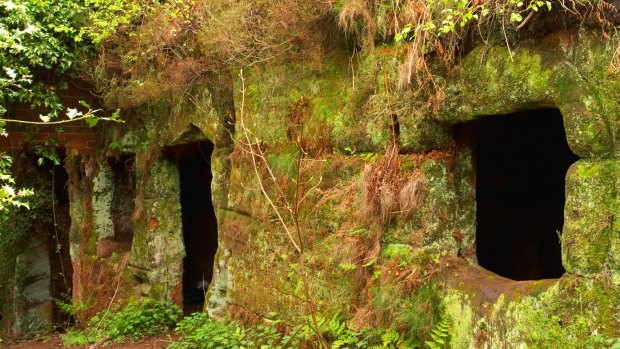
Similarities: A rock cave house is reminiscent of a hobbit house.Credit: Alamy
"I call this the 'Gollum pond'," says Irene DeBoo, as we reach a small clearing coated in luminous lime-shaded algae. "One day, my dog thought he could walk across it. He couldn't. He fell in and came out all green!"
We are in Moseley Bog, an eerily atmospheric woodland where a spider-web of trails - both boardwalked and soily - weave through clusters of elders, birches, sycamores and oaks, whose lurching trunks and twisting branches conjure up visions of fairy tales and horror stories.
Ripe for adventures, the bog was a beloved childhood playground of JRR Tolkien. He would come here to draw trees, climb them, and, apparently, even talk to them. Some Tolkienites believe this was the prototype for Fangorn Forest, home of the Ents, the walking, talking trees of Lord of the Rings - Tolkien's hallowed tome, which this year (2014) marks its 60th birthday.
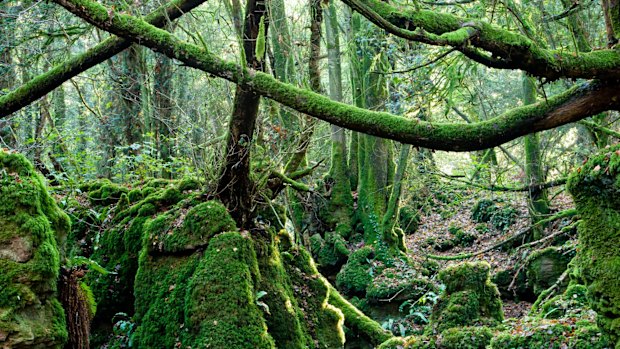
Middle-earth remembered: Puzzlewood in the Forest of Dean in Gloucestershire.Credit: Alamy
Others believe the bog inspired the Old Forest (where lurked Tom Bombadil and Old Man Willow in Tolkien's epic fantasy). Either way, it's a highlight of Birmingham's Tolkien Trail - a self-guided map that flaunts the old houses and haunts of the writer, who was born, John Ronald Reuel Tolkien, in South Africa in 1892 but grew up in Birmingham, native home of his parents.
"Tolkien lived in many places around the city, but he was at his happiest around Sarehole," says DeBoo, the curator manager at Sarehole Mill, a rustic landmark by the River Cole, a short walk from Moseley Bog, on the leafy southern outskirts of Britain's second largest metropolis.
"Tolkien would play - well, trespass - in the mill grounds with his younger brother, Hilary, and they were often chased off by the mill owner's son. He was usually covered in flour so the children nicknamed him the 'White Ogre'."
What Tolkien was absolutely clear about was his loathing of industrialisation; his abhorrence at the way it wrecked the countryside and how it left people dehumanised, and stripped away all the things he held dear: the kind of idyllic things you'd find in the Shire.
Carol Thompson
In The Hobbit (1937), Tolkien writes of Bilbo Baggins "pushing his keys in Gandalf's hands and running as fast as his furry feet could carry him down the lane, past the great Mill, across The Water and then on for a mile or more".
Tolkien specifically mentioned Sarehole Mill in a foreword to Lord of the Rings, and later helped fund the restoration of this 200-year-old building, which had become derelict by the 1960s.
Sporting a major recent refurbishment, including the desilting of its tranquil millpond, Sarehole is one of two surviving working water mills in Birmingham. Volunteers grind wheat twice a week and visitors can learn more about its mechanics - along with the area's connections to Tolkien. Archive slides show black and white pictures of the author as a boy, while a short film, featuring contributions from local Tolkien experts, reflects how Sarehole shaped his stories. "Sarehole was a place where adventure could come knocking at the door at any moment," says one fan.
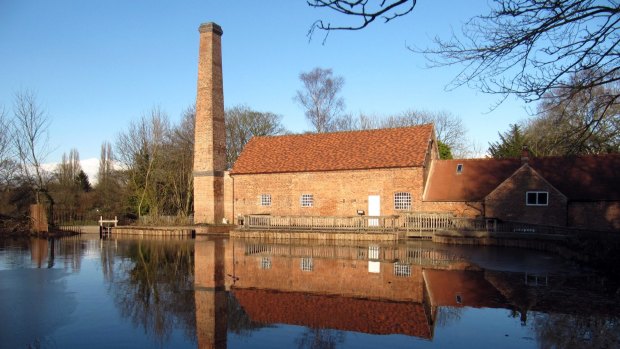
Familiar scenes: Sarehole Mill where JRR Tolkien played as a child.Credit: Birmingham Museums
One Sunday a month, the mill's in-house Tolkienite, Wayne Dixon, leads pilgrims on "Middle-earth tours" through the mill, the Bog and the Shire country park, a pastoral ribbon of greenery, home to kingfishers, herons and other wildlife. It was renamed in 2005 in tribute to Tolkien.
Most summers, the Shire hosts a Middle-earth Weekend - when Tolkien buffs dress up as Gandalf, Frodo Baggins and other iconic characters and partake in readings, reenactments and food-and-drink-fuelled revelry. Year-round, you can snack in the mill's cafe - which is dimpled with Tolkien references - or at Hungry Hobbit, a nearby sandwich bar.
In another section of the Tolkien Trail - the suburb of Edgbaston, where Tolkien moved to from Sarehole to be closer to his (now demolished) school in Birmingham city centre - I meet Blue Badge guide Mary Moore.
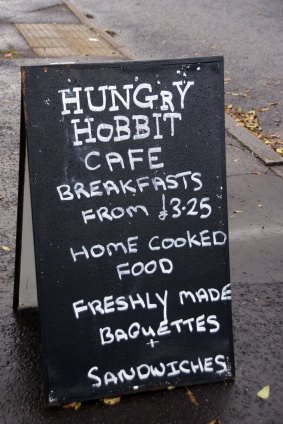
Cashing in: Middle-earth pointers are all around.Credit: Steve McKenna
Pointing out some of his old abodes - one of which is now a nursery with a blue plaque boasting that "JRR Tolkien lived here" - she regales Tolkien's topsy-turvy childhood: his father died in 1896, his mother died in 1904, and after a spell living with their aunt, he and brother Hilary became wards of their mother's friend - Catholic priest Francis Morgan.
Tolkien was never explicit about what inspired his stories - and dismissed any notions of allegory - but he conceded "an author cannot of course remain wholly unaffected by his experience". Two factors that dominated his youth were war and industrialisation.
Back then, Birmingham was jammed with factories, railways and belching towers; dubbed "The Workshop of the World" and "The City of A Thousand Trades". The city's businesses exported across the British Empire, but mined many of their raw materials in "The Black Country". This previously pastoral region west of Birmingham became famed for its hellishly polluted air and charred landscapes - the basis, perhaps, for Mordor, the ominous dominion of Middle-earth controlled by the Dark Lord Sauron. In Sindarin, the language of Tolkien's alternate universe, Mordor translates to "black lands".
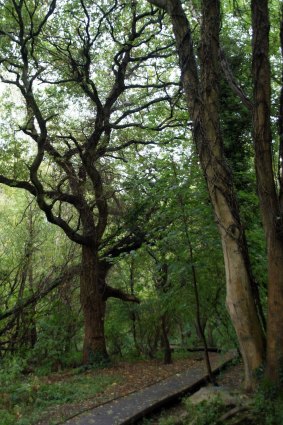
Childhood hangouts: Moseley Bog was another favourite playground.Credit: Steve McKenna
"What Tolkien was absolutely clear about was his loathing of industrialisation; his abhorrence at the way it wrecked the countryside and how it left people dehumanised, and stripped away all the things he held dear: the kind of idyllic things you'd find in the Shire," says Carol Thompson, the curator of The Making of Mordor, an intriguing new exhibition that explores the links between Tolkien's tales and his Midlands upbringing.
The exhibition is Hobbit-sized, but packed with engaging nuggets, such as a first edition Rings book, a pipe that Tolkien gifted to his brother and maps and illustrations of Middle-earth by Ted Nasmith, who's renowned for his work in another fantasy phenomenon, Game of Thrones.
Excerpts from Tolkien's stories stencil the walls, flaunting the parallels between the early 20th century Black Country and Mordor. Oil paintings of the blast-furnace-riddled Midlands look strikingly Mordor-esque. And sketches of zombie-like workers bear a gloomy resemblance to the Orcs and Trolls of Mordor - quite a contrast to the joyous craftspeople of bucolic Hobbiton.
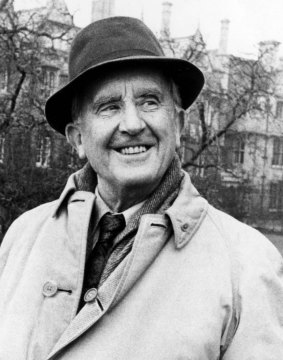
Writer: JRR Tolkien.
The exhibition does, however, counter Tolkien's apocalyptic views of industrialisation and its gloomy effects on society. Displays and photographs reveal how former industrial sites, disused quarries and abandoned railyards are being reclaimed by nature - or turned into parks and woodlands. Images of present-day Black Country industrial workers - from chainmaking firm Solid Swivel - shatter the idea that all manual workers are dead-eyed drones.
Part of the Black Country Echoes festival, which celebrates the region's manufacturing heritage, The Making of Mordor runs until January 17 at Wolverhampton Art Gallery, an eclectic hive of Georgian, Victorian, contemporary and pop art, 15 minutes from Birmingham by rail.
While New Zealand proudly trumpets its Middle-earth connections - Kiwi director Sir Peter Jackson has filmed all his Tolkien movies there; including the final Hobbit flick, out in Australian cinemas in December - Middle England remains self-deprecating about its Tolkien links. The region is more readily associated with Shakespeare, born in nearby Stratford-upon-Avon. Mary Moore tells me: "People are amazed to discover that Tolkien lived here - even Brummies (the affectionate moniker for Birmingham's residents)."
Yet Tolkien regarded himself as a "Birmingham man". And when the city's sparkling new central library was unveiled last year, The Hobbit was the first book placed on its shelves.
The library soars beside the Birmingham Repertory Theatre, attached to which is a blue plaque that commemorates the Brummie surgeon who invented "gamgee tissue" (the local name for cotton wool).
In Edgbaston, a young Tolkien lived across the road from the widow of Dr Sampson Gamgee. In The Lord of the Rings, Samwise Gamgee was the loyal friend of Frodo Baggins, and at the end of the story, Sam marries Rose Cotton.
Steve McKenna was a guest of Visit Britain, Marketing Birmingham, Hotel La Tour and Pushkar
FIVE OTHER TOLKIEN HOTSPOTS
1. SOUTH AFRICA. In Tolkien's birthplace, Bloemfontein, there's a four-star Hobbit Boutique Hotel, its rooms furnished with Middle-earth influences (hobbit.co.za). A young Tolkien apparently had a family holiday in Hogsback, a mountainous Shire-like village in the Eastern Cape (awaywiththefairies.co.za).
2. UK. As well as studying at Oxford, Tolkien was a professor there, and regularly drank at the Eagle & Child pub with CS Lewis. Tolkien is buried at Wolvercote Cemetery, on Oxford's outskirts, with wife Edith. They died 21 months apart in the early 1970s. Tolkien also taught at Leeds University, and the neighbouring Lancashire countryside has its own Tolkien Trail (visitlancashire.com/dbimgs/Tolkien_Trail.pdf). Hobbit-style accommodation is found across the UK, including on the Treberfedd organic farm in rural Wales (hobbithousewales.co.uk).
3. THE PHILIPPINES. Staffed entirely by midgets, Hobbit House, in Ermita, is one of Manila's most popular bars - especially with tourists, who love taking photographs with the vertically-challenged waiters. There's another branch on the resort island of Boracay (hobbithousemanila.com).
4. NEW ZEALAND. New Zealand's tourism industry has received a massive boost thanks to Peter Jackson's cinematic sensations. Matamata, Mount Cook, Fiordland and the Tongariro National Park are some of the postcard-perfect filming locations of Middle-earth (newzealand.com/au/home-of-middle-earth).
5. ITALY. Some Tolkienites claim Stromboli volcano, one of the Aeolian islands near Sicily, was the inspiration for Mount Doom, where, in Lord of the Rings, Frodo tosses the One Ring into. Tolkien and Edith were apparently on a Mediterranean cruise when they saw Stromboli erupting, spewing lava into the night sky (italia.it).
TRIP NOTES
MORE INFORMATION
GETTING THERE
Emirates fly from Sydney and Melbourne to Birmingham via Dubai. Return fares priced from around $1880; see emirates.com.
STAYING THERE
Hotel La Tour is a sleek four-star choice in central Birmingham, with 174 stylish rooms and a good in-house bistro that serves British classics with a modern twist (such as steak and Brummie ale pie). Advance room rates from $139; see hotel-latour.co.uk.
TOURING THERE
Mary Moore offers guided tours throughout the English Midlands, including Birmingham's Tolkien-related sites (birminghamtouristguide.com); Hobbit-inspired bus tours are held occasionally, covering many of the spots on the Tolkien Trail, usually around Middle-earth Weekend; see birmingham-tours.co.uk.
EATING THERE
Birmingham was labelled "Britain's foodiest town" by the BBC's food magazine, Olive, thanks to its raft of Michelin-starred restaurants and cosmopolitan cuisine. With a large south Asian population, curries are a speciality. The Balti Triangle, in the city's south, is legendary for its fiery dishes (balti-birmingham.co.uk), while Pushkar is an upscale Indian restaurant and cocktail bar on vibrant Broad Street, a two-minute walk from Birmingham Central Library (pushkardining.com). Moseley village, close to Sarehole Mill, has excellent eateries, decent pubs, quirky boutiques and farmers' markets.
Sign up for the Traveller Deals newsletter
Get exclusive travel deals delivered straight to your inbox. Sign up now.